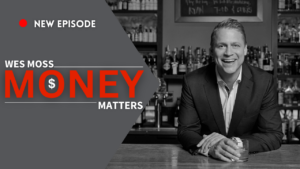Israeli troops are in Gaza, ISIL is storming through the Middle East, oil prices are volatile, you should have to take out a life insurance policy to fly Malaysian Airlines, and stocks are at all time highs. All told, it’s a scary time to be an investor.
As an investment advisor, I’m constantly answering the question, “How do I cut through the clutter of bad investment strategies?” Everyone wants a strategy that makes them feel confident about investing in the future, especially at times like this when everyone seems to be holding their breath.
My answer to this is a strategy that I preach to pretty much anyone who will listen, income investing. I even dedicated a whole chapter to it in my book, You Can Retire Sooner Than You Think.
What is income investing?
Income investing is a way to generate consistent cash flow from your liquid investments.
What this really means is that you are collecting the cash flow from dividends from stocks, interest from various types of bonds and distributions that come from a variety of investments (investments that pay distributions but don’t fit neatly in the stock or bond category). Adding the three of these together gives you a personal portfolio yield.
Income investing focuses on the production of a steady cash flow from the yield of your stocks, bonds and other investments, which can be reinvested in your portfolio or used to fund your spending needs if you need the cash flow.
This is different from pure growth investing in that pure growth investing relies on a rising stock market to build value. Income investing allows you to diversify your investments, collect a steady stream of income along the way, and (most likely) see a steady increase in the value over time.
If this still seems confusing, let me explain this approach using my bucket system. (They’re buckets because you put your liquid net worth into them. Get it!?)
Bucket 1 – Bonds – Income – Contributions to this bucket are invested in various types of bonds — Treasury, corporate, municipal, high yield, TIPS, international, and floating rate. They will provide you with a steady interest income. A well-diversified bond portfolio should protect your principal, as well. To maximize your return over time you have to diversify within this bucket.
Bucket 2 – Stocks – Growth – This bucket will hold different stocks for people in different stages in life. If you’re under 60 and still working, you should consider owning growth stocks. These are shares in companies that have large growth rates, but usually they don’t pay much of a dividend. Their focus is on capital appreciation through growth in their revenue and earnings.
On the flip side, if you are a retiree, you should probably focus more on dividend-paying stocks. These are companies that aim to give you some capital appreciation and pay you a nice dividend along the way.
Dividends accounted for 44 percent of the total return of the S&P 500 over the last 80 years. This is one reason I’m such a believer in income investing.
Bucket 3 – Variety of Investments – Alternative Income – This is the smallest bucket of the three. It holds investments that don’t fit neatly into either of the above buckets. For example, this bucket holds investments in energy royalty trusts (publicly traded oil and gas trusts), real estate investment trusts, preferred stocks, and MLP stocks (pipeline and energy storage companies). These are traded like normal stocks on the open exchanges, but they don’t pay traditional dividends or interest…they pay distributions.
The idea of using the bucket approach to income investing is that you can diversify your liquid savings and use them to either supplement your income in retirement, or reinvest the portfolio’s income to accumulate more wealth over time.
All that being said, this is obviously not the only functional investment method in the world. However, I’ve found it to be a tried-and-true method for those who are looking for a low cost, transparent, and consistent investment strategy built for the long-run. You can learn more about this method by reading my Wall Street Journal article on it here, or by picking up a copy of my book, You Can Retire Sooner Than You Think.








